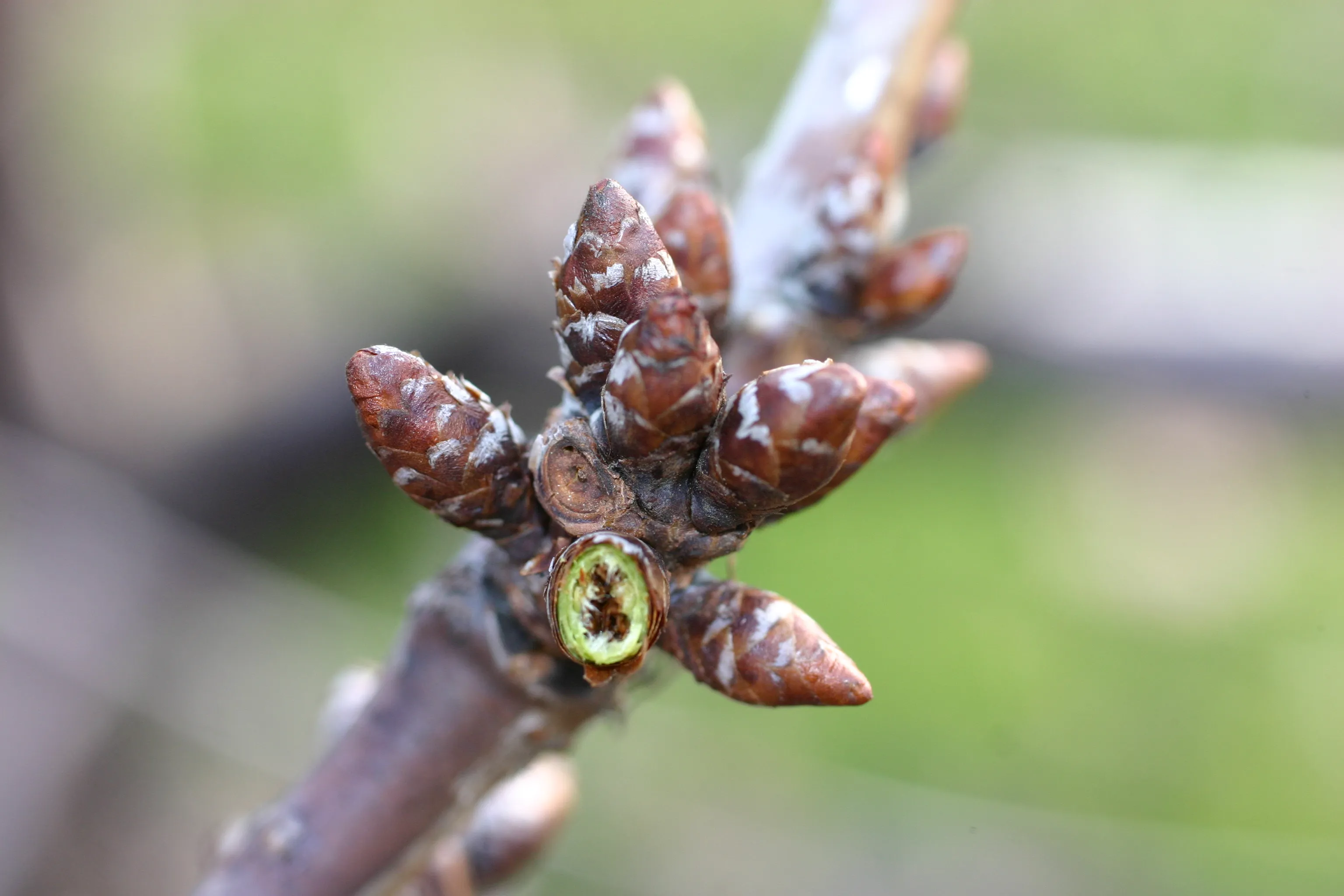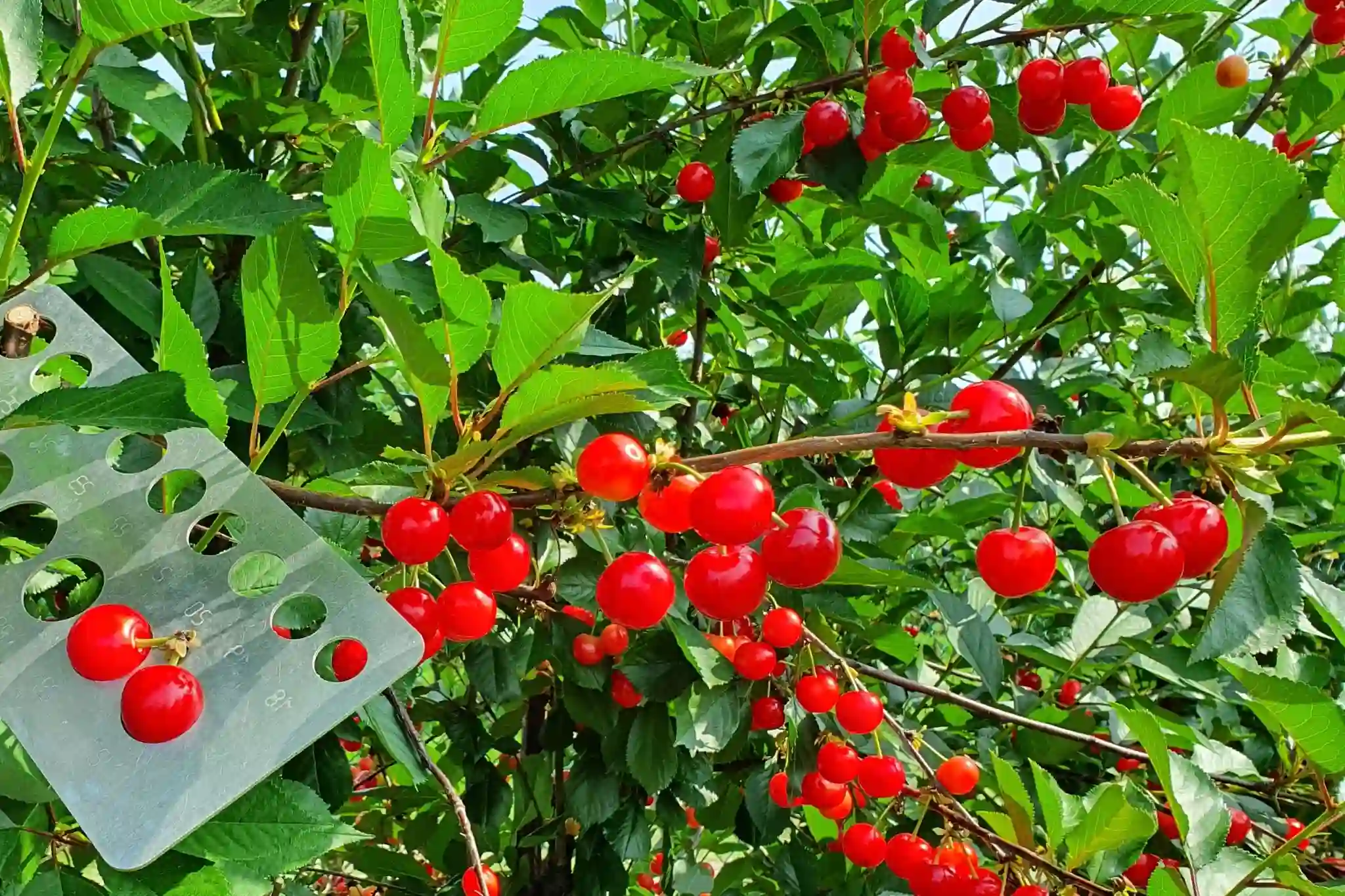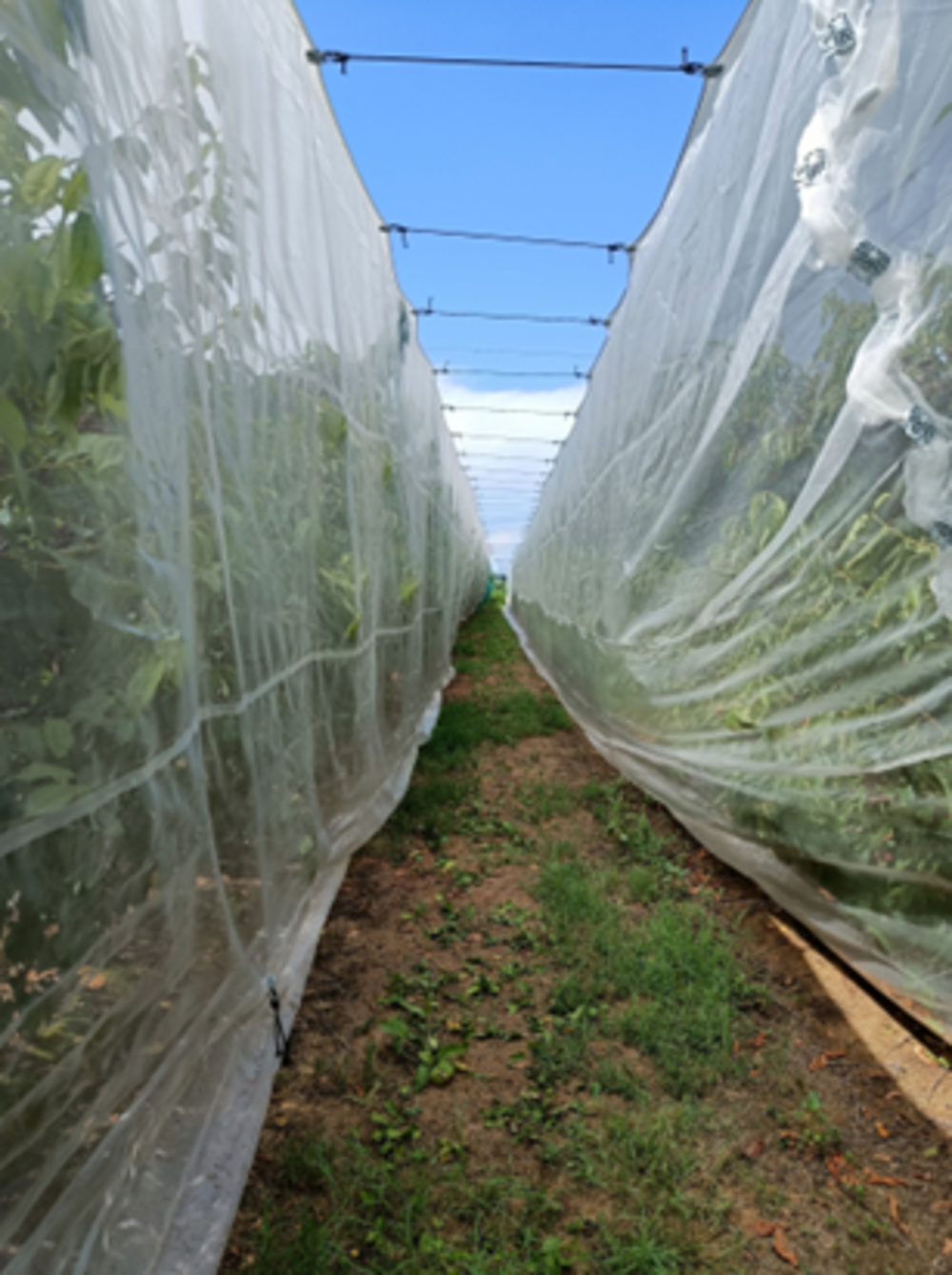It’s that time of year again: colder weather and shorter days, cozy sweaters and hot chocolate. This time of year also impacts those involved in perennial fruit production.
The winter thoughts begin: “When will chill accumulation start this year? Will it stay cold long enough? Will there be a significant spring frost? Can we protect ourselves? If not, how severe will the losses be?”.
Frost protection for perennial fruit crops, especially for many growers in the southeastern United States with temperature fluctuations in late winter and early spring, is a necessity for production. Frost protection has evolved over the years.
One of the earliest forms of protection involved oil pots burning in the fields to raise the air temperature, but due to concerns about pollution, this technique is no longer used commercially. Physical covers, such as tarps, have also been used to prevent frost from forming on crops.
However, this method works better on small plants not grown on a large scale. Mist systems have been used to retain the heat from the soil near the plants like a blanket, but without calm winds, this method is ineffective.
Permanent structures, such as heated sheds, work well to exclude freezing temperatures, but they are costly to construct. Currently, the two most commonly used frost protection methods for perennial fruit crops are overhead irrigation and wind machines. Overhead irrigation is started before freezing temperatures begin and continues until they end.
Plants are continuously sprayed with water, and the ongoing transition from water to ice releases a few degrees of heat that protects the flowers and fruit from freezing temperatures. However, this method does not work well under conditions of low water pressure and/or high wind.
 Image 1: Frost damage on sweet cherry trees.
Image 1: Frost damage on sweet cherry trees.
Alternatively, wind machines mix the air during a freeze event where the air above the orchard is warmer than near the ground. However, this method is ineffective for frosts that are not caused by a temperature inversion. Additionally, both overhead irrigation and wind machines only raise the temperature by a few degrees and have a high installation cost.
A new method of frost protection needs to be added to growers’ arsenals. Nanocellulose compounds are a new technology consisting of natural and biodegradable compounds. These compounds are made from plant-based materials found in nature, called cellulose. Cellulose is extracted from plants and transformed into tiny particles called nanocellulose, which can be sprayed onto orchards before the onset of frost.
These compounds, if effective, could reduce implementation costs and increase the spread of protection before a freeze. Once sprayed onto plants, they would create a protective barrier similar to a person wearing a heavy winter coat. Nanocellulose can protect plants from freezing temperatures due to its low heat transfer capacity and its excellent insulating properties for freezing temperatures.
Nanocellulose compounds are being tested on fruit crops, including sweet cherries, grapes, and apples, in the Pacific Northwest. According to research from Washington State University, nanocellulose sprays improve the cold resistance of grapevines and sweet cherries by 3.6 to 7.2 degrees.
Since 2021, we have been studying the effects of nanocellulose sprays on blueberries and peaches over three seasons in the laboratory. Overall, we have examined various commercial nanocellulose compounds, concentrations, and spray application methods. While one question about nanocellulose as a frost protection method has been answered, others have arisen.
Our current results suggest that some compounds could be used for frost protection in the early stages of flower buds, while the opposite is true for later development stages. There is still work to be done. We still need answers: which compound to spray, when to spray before frost, how long the spray will protect the plant, and at what temperature?
We are not yet able to provide field recommendations, but we are working to gain a better understanding. Over time, I hope nanocellulose can be a tool to help prevent devastating losses from spring frosts.
Source: Fruit Growers News
Image: SL Fruit Service
Rachel Itle
University of Georgia
Cherry Times - All rights reserved













